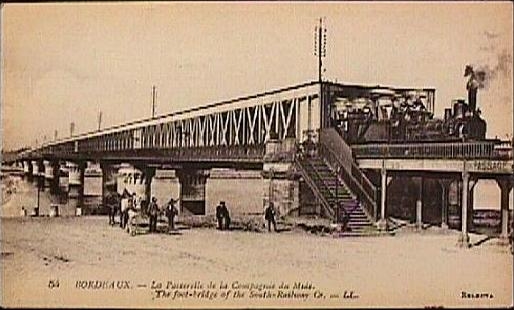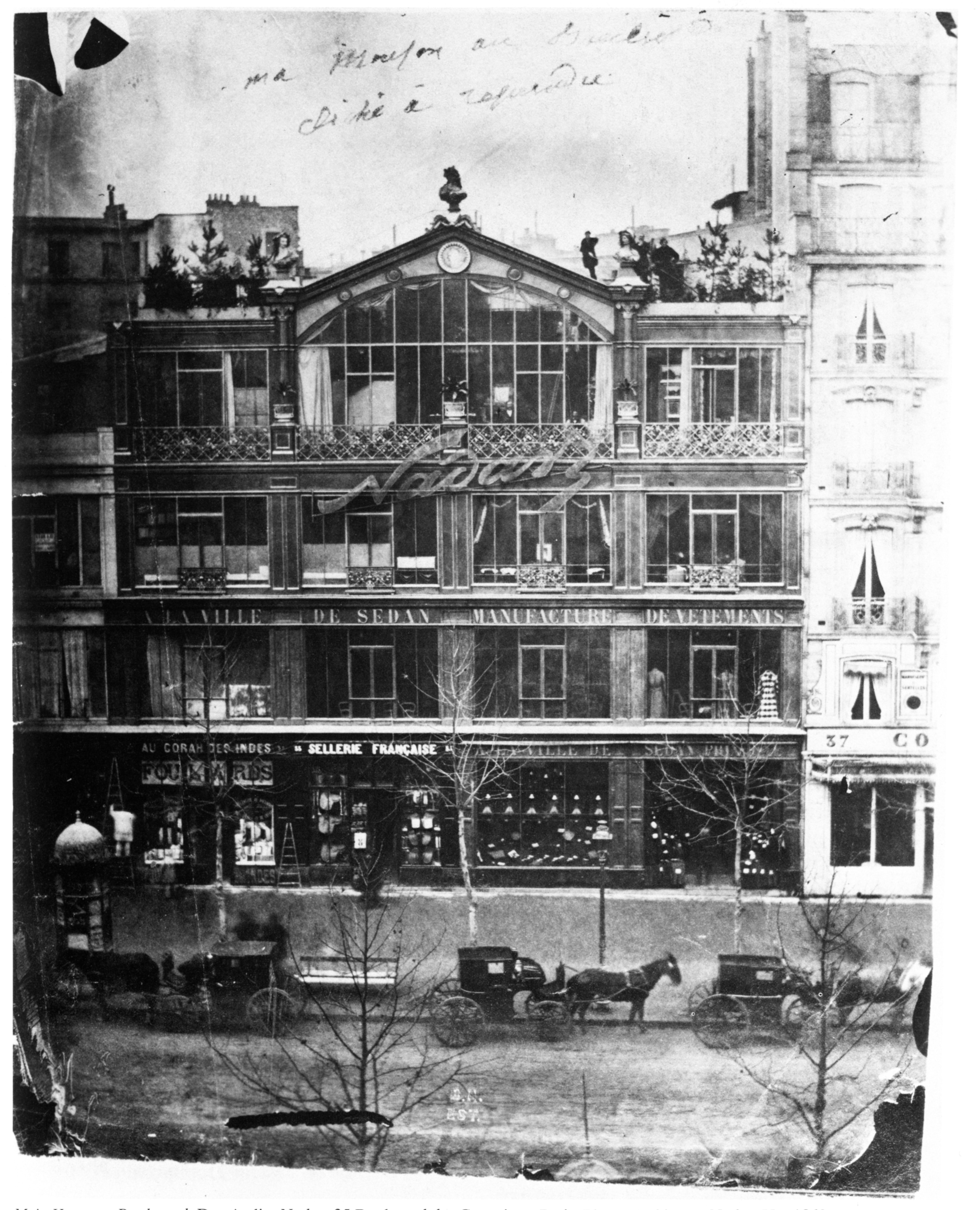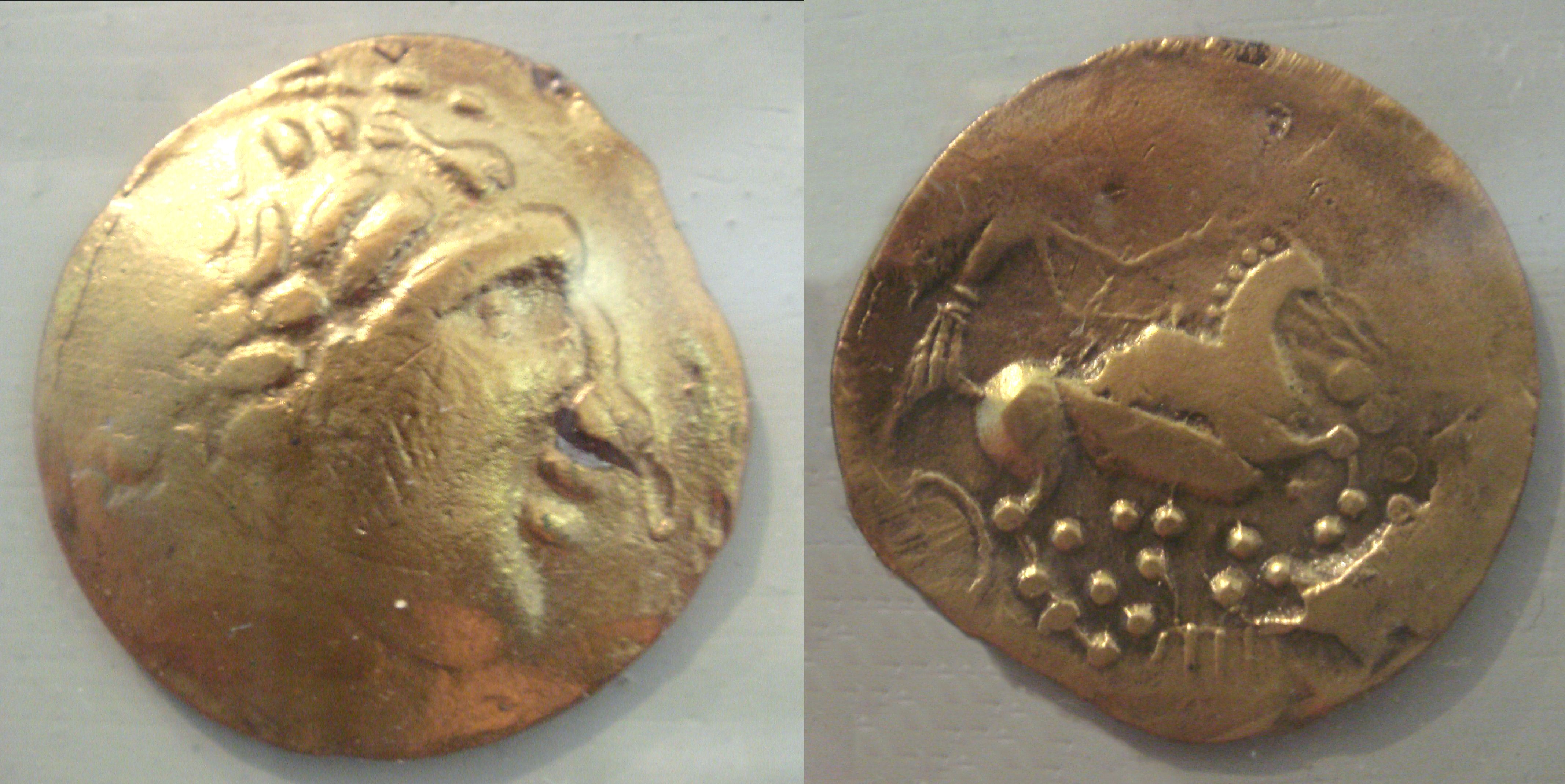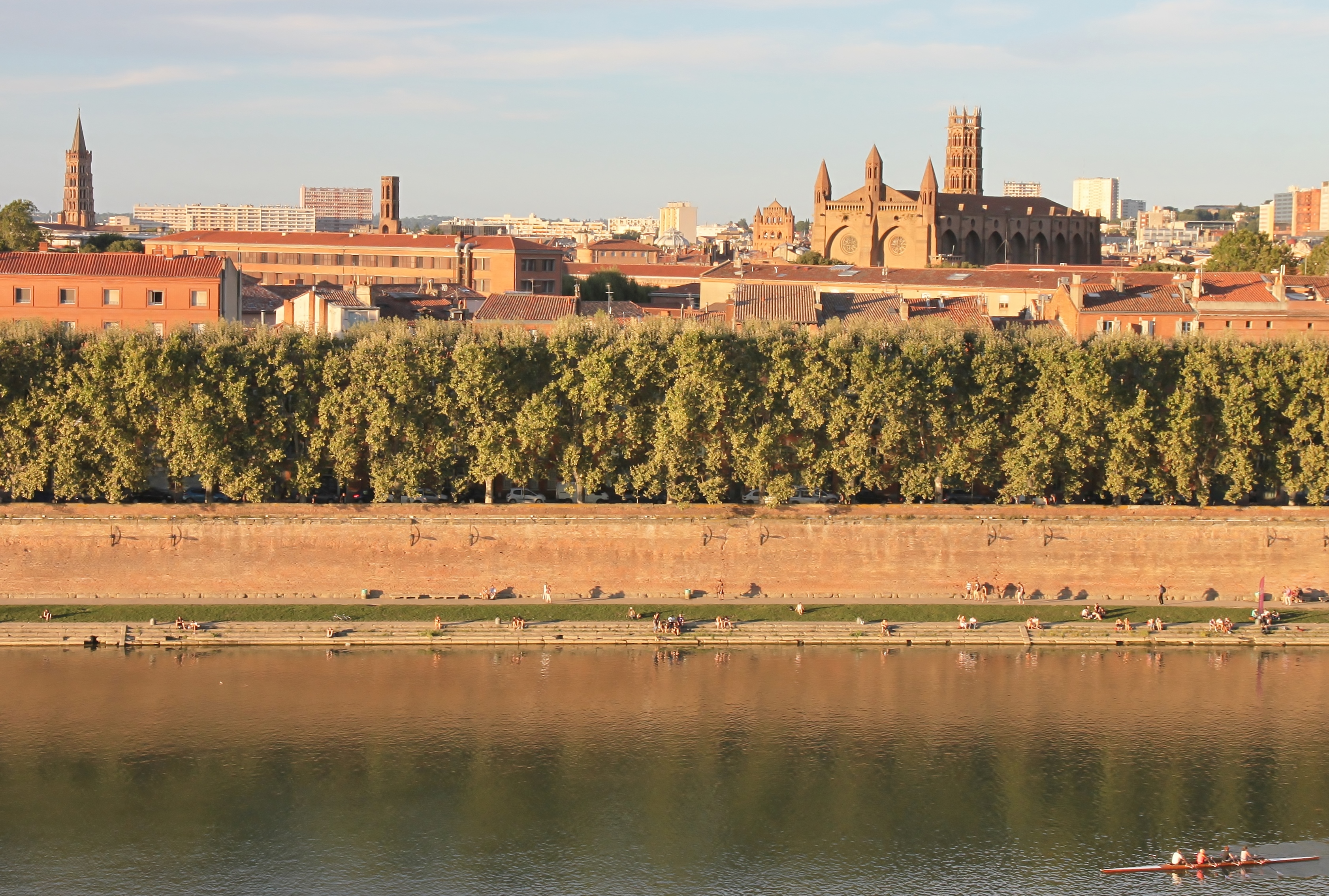|
Gustav Eiffel
Alexandre Gustave Eiffel ( , ; Bonickhausen dit Eiffel; 15 December 1832 – 27 December 1923) was a French civil engineer. A graduate of École Centrale des Arts et Manufactures, he made his name with various bridges for the French railway network, most famously the Garabit Viaduct. He is best known for the world-famous Eiffel Tower, designed by his company and built for the 1889 Universal Exposition in Paris, and his contribution to building the Statue of Liberty in New York. After his retirement from engineering, Eiffel focused on research into meteorology and aerodynamics, making significant contributions in both fields. Early life Alexandre Gustave Eiffel was born in France, in the Côte-d'Or, the first child of Catherine-Mélanie (née Moneuse) and Alexandre Bonickhausen dit Eiffel. He was a descendant of Marguerite Frédérique (née Lideriz) and Jean-René Bönickhausen, who had emigrated from the German town of Marmagen and settled in Paris at the beginning of the ... [...More Info...] [...Related Items...] OR: [Wikipedia] [Google] [Baidu] |
Félix Nadar
Gaspard-Félix Tournachon (; 5 April 1820 – 20 March 1910), known by the pseudonym Nadar () or Félix Nadar'','' was a French people, French photographer, caricaturist, journalist, novelist, balloon (aircraft), balloonist, and proponent of History of aviation#Heavier than air, heavier-than-air flight. In 1858, he became the first person to take aerial photographs. Photographic portraits by Nadar are held by many of the great national collections of photographs. His son, Paul Nadar, continued the studio after his death. Life Gaspard-Félix Tournachon (also known as Nadar) was born in early April 1820 in Paris, though some sources state he was born in Lyon. His father, Victor Tournachon, was a printer and bookseller. Nadar began to study medicine but quit for economic reasons after his father's death. Nadar started working as a caricaturist and novelist for various newspapers. He fell in with the Parisian bohemian group of Gérard de Nerval, Charles Baudelaire, and Théodore d ... [...More Info...] [...Related Items...] OR: [Wikipedia] [Google] [Baidu] |
Marmagen
Marmagen is a German tradesmen's village in the Eifel with a population of about 1,600. The formerly independent parish has been part of the municipality of Nettersheim in the district of Euskirchen since 1969. Marmagen is the oldest village in the former district of Schleiden and goes back to the Roman ''vicus In Ancient Rome, the Latin term (plural ) designated a village within a rural area () or the neighbourhood of a larger settlement. During the Republican era, the four of the city of Rome were subdivided into . In the 1st century BC, Augustus ...'' of Marcomagus on the Roman road from Trier to Cologne which is recorded in Roman itineraries of the 2nd to 4th centuries. After a 700-year history as an abbey village owned by the nearby Premonstratensian Abbey of Steinfeld since the early 1900s Marmagen has developed a distinct culture of trades in the building sector. Today Marmagen sees itself as a 'nature experience village' and is the site of the well known clinic, ... [...More Info...] [...Related Items...] OR: [Wikipedia] [Google] [Baidu] |
Bayonne
Bayonne () is a city in southwestern France near the France–Spain border, Spanish border. It is a communes of France, commune and one of two subprefectures in France, subprefectures in the Pyrénées-Atlantiques departments of France, department, in the Nouvelle-Aquitaine regions of France, region. Bayonne is located at the confluence of the Nive and Adour Rivers, in the northern part of the cultural region of the Basque Country (greater region), Basque Country. It is the seat of the Communauté d'agglomération du Pays Basque which roughly encompasses the western half of Pyrénées-Atlantiques, including the coastal city of Biarritz. The area also constitutes the southern part of Gascony, where the Aquitaine Basin joins the beginning of the Pre-Pyrenees. Together with nearby Anglet, Biarritz, Saint-Jean-de-Luz and several smaller communes, Bayonne forms an urban area with 273,137 inhabitants in the 2018 census, 51,411 of whom lived in the commune of Bayonne proper. [...More Info...] [...Related Items...] OR: [Wikipedia] [Google] [Baidu] |
Sète
Sète (; , ), also historically spelled ''Cette'' (official until 1928) and ''Sette'', is a commune in the Hérault department, in the region of Occitania, southern France. Its inhabitants are called ''Sétois'' (male) and ''Sétoises'' (female) in French, "Setòris" and "Setòria" in Occitan. Known as the ''Venice of Languedoc'' and the ''singular island'' (in Paul Valéry's words), it is a port and a seaside resort on the Mediterranean with its own very strong cultural identity, traditions, cuisine and dialect. It is the hometown of such artists as Paul Valéry, Maurice Elie Sarthou, Jean Vilar, Georges Brassens, Hervé Di Rosa, Manitas de Plata, and Robert Combas. Since 2001, François Commeinhes is the mayor of the city. Geography Built upon and around Mont St Clair, Sète is situated on the south-eastern end of the Étang de Thau, an enclosed salt water lake used primarily for oyster and mussel fields. To its other side lies the Mediterranean, and the town has ... [...More Info...] [...Related Items...] OR: [Wikipedia] [Google] [Baidu] |
Bordeaux
Bordeaux ( ; ; Gascon language, Gascon ; ) is a city on the river Garonne in the Gironde Departments of France, department, southwestern France. A port city, it is the capital of the Nouvelle-Aquitaine region, as well as the Prefectures in France, prefecture of the Gironde department. Its inhabitants are called "''Bordelais'' (masculine) or "''Bordelaises'' (feminine). The term "Bordelais" may also refer to the city and its surrounding region. The city of Bordeaux proper had a population of 259,809 in 2020 within its small municipal territory of , but together with its suburbs and exurbs the Bordeaux Functional area (France), metropolitan area had a population of 1,376,375 that same year (Jan. 2020 census), the sixth-most populated in France after Paris, Lyon, Marseille, Lille, and Toulouse. Bordeaux and 27 suburban municipalities form the Bordeaux Métropole, Bordeaux Metropolis, an Indirect election, indirectly elected Métropole, metropolitan authority now in charge of wi ... [...More Info...] [...Related Items...] OR: [Wikipedia] [Google] [Baidu] |
Garonne
The Garonne ( , ; Catalan language, Catalan, Basque language, Basque and , ; or ) is a river that flows in southwest France and northern Spain. It flows from the central Spanish Pyrenees to the Gironde estuary at the French port of Bordeaux – a length of , of which is in Spain (Val d'Aran);Le bassin versant de la Garonne Syndicat Mixte d'Études & d'Aménagement de la Garonne the total length extends to if one includes the Gironde estuary between the river and the sea. Its basin area is , which increases to if the Dordogne (river), Dordogne River, which flows from the east and joins the Garonne at Bec d'Ambès to form the Gironde estuary, is included. Umayyad and Duchy of Aquitaine , Aquitanian forces fought the Battle of the River Garonne in 732 beside the river near present-day ... [...More Info...] [...Related Items...] OR: [Wikipedia] [Google] [Baidu] |
Charles Nepveu
Charles is a masculine given name predominantly found in English and French speaking countries. It is from the French form ''Charles'' of the Proto-Germanic name (in runic alphabet) or ''*karilaz'' (in Latin alphabet), whose meaning was "free man". The Old English descendant of this word was '' Ċearl'' or ''Ċeorl'', as the name of King Cearl of Mercia, that disappeared after the Norman conquest of England. The name was notably borne by Charlemagne (Charles the Great), and was at the time Latinized as ''Karolus'' (as in ''Vita Karoli Magni''), later also as '' Carolus''. Etymology The name's etymology is a Common Germanic noun ''*karilaz'' meaning "free man", which survives in English as churl (James (wikt:Appendix:Proto-Indo-European/ǵerh₂-">ĝer-, where the ĝ is a palatal consonant, meaning "to rub; to be old; grain." An old man has been worn away and is now grey with age. In some Slavic languages, the name ''Drago (given name), Drago'' (and variants: ''Dragom ... [...More Info...] [...Related Items...] OR: [Wikipedia] [Google] [Baidu] |
Foundry
A foundry is a factory that produces metal castings. Metals are cast into shapes by melting them into a liquid, pouring the metal into a mold, and removing the mold material after the metal has solidified as it cools. The most common metals processed are aluminum and cast iron. However, other metals, such as bronze, brass, steel, magnesium, and zinc, are also used to produce castings in foundries. In this process, parts of desired shapes and sizes can be formed. Foundries are one of the largest contributors to the manufacturing recycling movement, melting and recasting millions of tons of scrap metal every year to create new durable goods. Moreover, many foundries use sand in their molding process. These foundries often use, recondition, and reuse sand, which is another form of recycling. Process In metalworking, casting involves pouring liquid metal into a mold, which contains a hollow cavity of the desired shape, and then allowing it to cool and solidify. The solidified pa ... [...More Info...] [...Related Items...] OR: [Wikipedia] [Google] [Baidu] |
Bordeaux Passerelle Eiffel
Bordeaux ( ; ; Gascon language, Gascon ; ) is a city on the river Garonne in the Gironde Departments of France, department, southwestern France. A port city, it is the capital of the Nouvelle-Aquitaine region, as well as the Prefectures in France, prefecture of the Gironde department. Its inhabitants are called "''Bordelais'' (masculine) or "''Bordelaises'' (feminine). The term "Bordelais" may also refer to the city and its surrounding region. The city of Bordeaux proper had a population of 259,809 in 2020 within its small municipal territory of , but together with its suburbs and exurbs the Bordeaux Functional area (France), metropolitan area had a population of 1,376,375 that same year (Jan. 2020 census), the sixth-most populated in France after Paris, Lyon, Marseille, Lille, and Toulouse. Bordeaux and 27 suburban municipalities form the Bordeaux Métropole, Bordeaux Metropolis, an Indirect election, indirectly elected Métropole, metropolitan authority now in charge of wi ... [...More Info...] [...Related Items...] OR: [Wikipedia] [Google] [Baidu] |
Exposition Universelle (1855)
The of 1855 (), better known in English as the 1855 Paris Exposition, was a world's fair held on the Champs-Élysées in Paris, France, from 15 May to 15 November 1855. Its full official title was the . It was the first of ten major expositions held in the city between 1855 and 1937. Nowadays, the exposition's sole physical remnant is the Théâtre du Rond-Point des Champs-Élysées, designed by architect Gabriel Davioud, which originally housed the Panorama National. History The exposition was a major event in France, then newly under the reign of Emperor Napoleon III. It followed London's Great Exhibition of 1851 and attempted to surpass that fair's Crystal Palace with its own Palais de l'Industrie. The arts displayed were shown in a separate pavilion on Avenue Montaigne. There were works from artists from 29 countries, including French artists François Rude, Ingres, Delacroix and Henri Lehmann, and British artists William Holman Hunt and John Everett Millais. How ... [...More Info...] [...Related Items...] OR: [Wikipedia] [Google] [Baidu] |
École Polytechnique
(, ; also known as Polytechnique or l'X ) is a ''grande école'' located in Palaiseau, France. It specializes in science and engineering and is a founding member of the Polytechnic Institute of Paris. The school was founded in 1794 by mathematician Gaspard Monge during the French Revolution and was militarized under Napoleon I in 1804. It is still supervised by the Ministry of Armed Forces (France), French Ministry of Armed Forces. Originally located in the Latin Quarter, Paris, Latin Quarter in central Paris, the institution moved to Palaiseau in 1976, in the Paris-Saclay, Paris-Saclay technology cluster. French engineering students undergo initial military training and have the status of paid Aspirant, officer cadets. The school has also been awarding doctorates since 1985, masters since 2005 and bachelors since 2017. Most Polytechnique engineering graduates go on to become top executives in companies, senior civil servants, military officers, or researchers. List of É ... [...More Info...] [...Related Items...] OR: [Wikipedia] [Google] [Baidu] |
Collège Sainte-Barbe
The Collège Sainte-Barbe () is a former college in the 5th arrondissement of Paris, France. The Collège Sainte-Barbe was founded in 1460 on Montagne Sainte-Geneviève ( Latin Quarter, Paris). It was until its closure in June 1999 the "oldest" identified college of Paris. The Barbiste Spirit is kept alive through the Friendly Association of Old Barbistes, founded in 1820, recognized a public society since 1880, which is the oldest association of alumni of France, "l'Association Amicale des Anciens Barbistes". Alumni Former Barbists (ordered by date of birth) include: * Diogo de Gouveia (1471–1557) * Ignace de Loyola (1491–1556) * André de Gouveia (1497–1548) * St. François-Xavier (1506–1552), Roman Catholic missionary to India, China, and Southeast Asia * Pierre Lefevre (1506–1546) * Guillaume Postel (1510–1581) * Achilles Statius (1524–1581) * Michel Adanson (1727–1806),naturalist) * Jean Baptiste Louis Romé de Lisle (1736–1790), founder of c ... [...More Info...] [...Related Items...] OR: [Wikipedia] [Google] [Baidu] |






